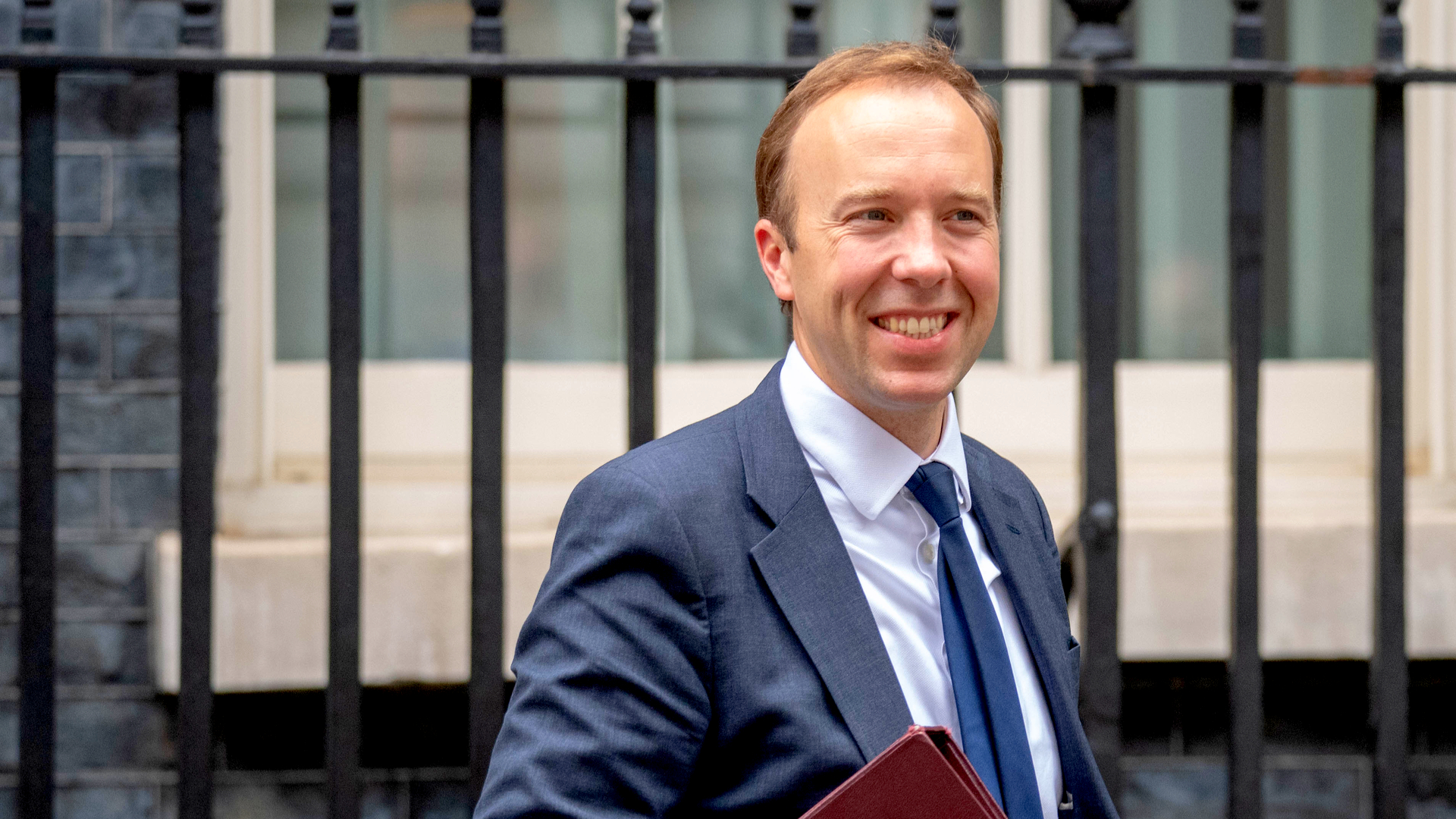What businesses can learn from the NHS’ digital transformation rollercoaster
Winning cultural battles, not just talking about tech, could be key to digitising our health and social care system


There are fewer challenges in government greater than digitising the NHS, an organisation steeped in legacy infrastructure and outdated technology. It's proved an enigma for politicians of all stripes, but Matt Hancock's appointment as health secretary seemingly marked a new dawn, or at the very least coincided with one.
For the first time the NHS has a figurehead that exudes a basic technical comprehension, and whose sound bites extend from "I love the NHS" to a focus on how healthcare can best take advantage of emerging technologies. But behind the scenes, there's also been pockets of highly promising work, as well as a handful of catastrophes.
Digitising the fifth largest employer in the world, however, involves more than delivering a speech or announcing a ten-year plan, rather it's a collaborative effort that demands a coalition of players. The challenges, meanwhile, are plentiful, with resources spread thinly, and a general talent shortage hitting all industries, let alone the healthcare system.
The UK's 'patchworked' approach bucks the trend

Matt Hancock was previously responsible for technology development in his role as DCMS Secretary
Hancock used his inaugural speech to announce a 487 million funding package for digital projects, the vast majority of which were earmarked for technology to boost patient safety and increase remote access to health services.
Pronouncements since have largely centred on lofty ambitions; that the NHS must use more apps, or eliminate fax machines by March 2020, for example, or even that all GP practice must offer video appointments by 2024. But a detailed Long Term Plan released last month not only draws a line through the aims, but sets a roadmap for a forward-thinking health service with tech at its heart.
However, the NHS is underpinned by a desperately fragmented structure, with organisations tied to varying systems, suppliers, and budgets. What then makes any renewed efforts to digitally transform the NHS any different from the disasters of the past?
Sign up today and you will receive a free copy of our Future Focus 2025 report - the leading guidance on AI, cybersecurity and other IT challenges as per 700+ senior executives
"We all know how that story ended," says senior analyst with Forrester, Jeff Becker, commenting on the National Programme for IT (NPfIT), the NHS's very first IT initiative launched in 2002.
"The problem with the NHS's patchwork approach to digital transformation is that in any given Trust, clinical workflows are fractured across multiple systems. Implementing hospital-wide policy changes or evidence-based medicine guidelines are far more complex in this environment than if patient care was consolidated within fewer systems of record."
Becker says the NHS "pivoted 180 degrees" when it examined how other systems approached technology, with physicians often raising patient safety concerns and anxieties with heavy clinical workflows plaguing electronic patient record (EPR) systems. Dissatisfaction with the centralised model also led to extremely low approval ratings among staff, and was cited as a leading cause of burnout.
The UK's solution was to take a different approach, with digital health procurements funded in small and non-integrated patches. This is the backbone of the NHS' digital infrastructure, with additional layers of technology deployed in line with this model.
"I don't envy the IT analyst responsible for implementing NICE guidelines within today's siloed digital ecosystem in the NHS," Becker adds, lamenting the headache of moving patient information across systems.
It's about winning hearts and minds
What does this mean for initiatives on the ground? Ella Worsdale, head of information with Pennine Care NHS Foundation Trust has seen a massive change in the last ten years in her own North-Western 'silo'.
Data, for the community and mental health services provider, has become dramatically more in-demand, she tells IT Pro. But a greater remit for data collection led to another problem. What purpose does the data actually serve if it can't then be fed back into the system to improve services and outcomes?
"The challenge over the years was getting a technology that helps us deliver reporting in the most streamlined way," she explains, "and, more importantly, in terms of how to engage clinical staff and senior managers who are not as into data as I am.

The NHS' mental health services are now heavily reliant high-speed data analysis
"We needed a technology that really got people on board to engage once we'd collected the information; in terms of getting it back to them so we could give them some actual insight as to what's going on with our services and our patients."
Conveying the significance of functions like data analytics to c-level decision makers is a common headache across a range of businesses. Overcoming this cultural challenge, for Worsdale, largely centred on introducing the new data visualisation tool, namely Tableau. But regardless of the particular software used, a degree of "hand-holding" was still needed.
"It was about winning hearts and minds," she adds, suggesting the best thing was seeing people light up as soon as they saw the data in a form they could recognise and interpret.
"You've got to take people through that journey when you're implementing a technology that's actually going to change the way they work. We try and stick with our staff who are involved in that change.
"You need to get them on board to see how it's going to work on a day-to-day basis, and what benefits it's going to bring. Unless they see a benefit, people generally don't engage."
Building a digital healthcare utopia
As with Tableau, which was brought in to cure a particular headache within a northwestern silo of the NHS, myriad vendors are working with other NHS organisations to solve specific issues, including Oracle, which has partnered with the NHS in one way or another since at least 2004, harking back to the dark days of NPfIT.
Oracle's director for UK healthcare, Anne-Marie Vine-Lott, explains that frontline services can actually benefit financially from streamlining back-end systems, such as finance and HR, with funds unlocked and reallocated. But there are several main challenges that come with tackling problems in an organisation of this scale, particularly when security is involved.

WannaCry, of which the NHS was an inadvertent victim, was considered a wake-up call for many, with blame apportioned to lax security considerations; specifically the widespread usage of long outdated Windows systems. The total cost to the NHS is believed to be around 92 million, the majority of which came from efforts to restore its systems back to an operational state. It demonstrated that cyber security strategies, moving with any future digital transformation projects, must be proactive rather than reactive.
"The NHS is made up of world class health practitioners but its IT systems are under attack from world class criminals who know the value of the data held and have targeted their technologies on the NHS," says Vine-Lott. "The NHS needs to make use of technologies that mitigate threats as much as possible, for example, the use of autonomous technologies to remove the chance of missing a patch update and being vulnerable to attack."
The problem posed by the NHS' size and structure, meanwhile, demands "systems that work seamlessly together, with other vendors". Many may view this as a utopian vision, but others a fairly realistic prospect, at least in the long-term. Regardless, while digitisation remains a work-in-progress, there are lessons both the wider public sector and organisations of a similar size, facing similar challenges with legacy infrastructure, can adopt.
"I don't think there is another organisation anywhere in the world that would fit the description of the NHS, so it's very much a unique example. What is critical is the sharing of success," says Vine-Lott. When asked how the NHS can use its experiences to help other organisations, she cited the UK's police force, which faces similar workforce issues and infrastructure concerns.
"Where one trust sees a real improvement in the care they provide to patients, which we must remember is at the heart of the digital transformation of the NHS, they can disseminate their learnings across the wider business so that others can emulate where possible."

Many of the technology limitations within the NHS are also found in police forces across the UK
NHS Pennines' Ella Worsdale certainly feels her organisation is ahead of the curb on this front, and can see neighbouring organisations in a similar position to where her Trust may have been just a few years ago.
"I sit in a few groups where we've got other organisations working together to help each other out, so we're not all battling to do the same thing," she explains. NHS organisations in Greater Manchester, she adds, are defying the UK's fragmented approach in order to pool together resources and expertise to work towards common digital goals.
"We are trying to work together. That's hard when the NHS is such a massive beast, but where it's possible [we should] work with other NHS organisations, especially where they're struggling.
"In my area specifically, if they haven't got Tableau or similar technologies, [it's about] trying to show them what the benefits are of doing something like this, and making sure they understand the cultural change they have to go through."

Keumars Afifi-Sabet is a writer and editor that specialises in public sector, cyber security, and cloud computing. He first joined ITPro as a staff writer in April 2018 and eventually became its Features Editor. Although a regular contributor to other tech sites in the past, these days you will find Keumars on LiveScience, where he runs its Technology section.
-
 What now for enterprise virtualization?
What now for enterprise virtualization?With a trusted partner like Pure Storage, businesses can make the most of their virtualization journey
-
 Nutanix wants to help customers shore up cloud sovereignty
Nutanix wants to help customers shore up cloud sovereigntyNews New automation tools and infrastructure management capabilities look to tackle single-vendor dependency and shore up sovereignty requirements
-
 Beating the IT brain drain: How to break the cycle of vanishing skills
Beating the IT brain drain: How to break the cycle of vanishing skillsIn-depth Preventing loss of expertise when employees move on has never been more important
-
 How the cost of living crisis will savage tech
How the cost of living crisis will savage techIn-depth Individuals and businesses alike are feeling the pinch, with the skills market and digital transformation projects in flux
-
 IT Pro News In Review: UK tech sector under threat, BT robotics lab launched, lawsuit against Google blocked
IT Pro News In Review: UK tech sector under threat, BT robotics lab launched, lawsuit against Google blockedVideo Catch up on the biggest headlines of the week in just two minutes
-
 Google continues New Zealand investment with Auckland office and engineering team
Google continues New Zealand investment with Auckland office and engineering teamNews The company has also launched a Google Cloud Dedicated Interconnect location in Auckland
-
 Singapore needs foreign tech talent to stave off crisis, central bank warns
Singapore needs foreign tech talent to stave off crisis, central bank warnsNews A lack of local skills means Singaporeans make up just a third of the financial sector’s tech workforce
-
 IT Pro 20/20: Meet the companies leaving the office for good
IT Pro 20/20: Meet the companies leaving the office for goodIT Pro 20/20 The 15th issue of IT Pro 20/20 looks at the nature of operating a business in 2021
-
 Virgin Media creates 400 jobs ahead of network expansion
Virgin Media creates 400 jobs ahead of network expansionNews The new roles range from network engineering and data analysis to finance and marketing
-
 What is MTA certification?
What is MTA certification?In-depth The Microsoft credential could give your IT career a boost